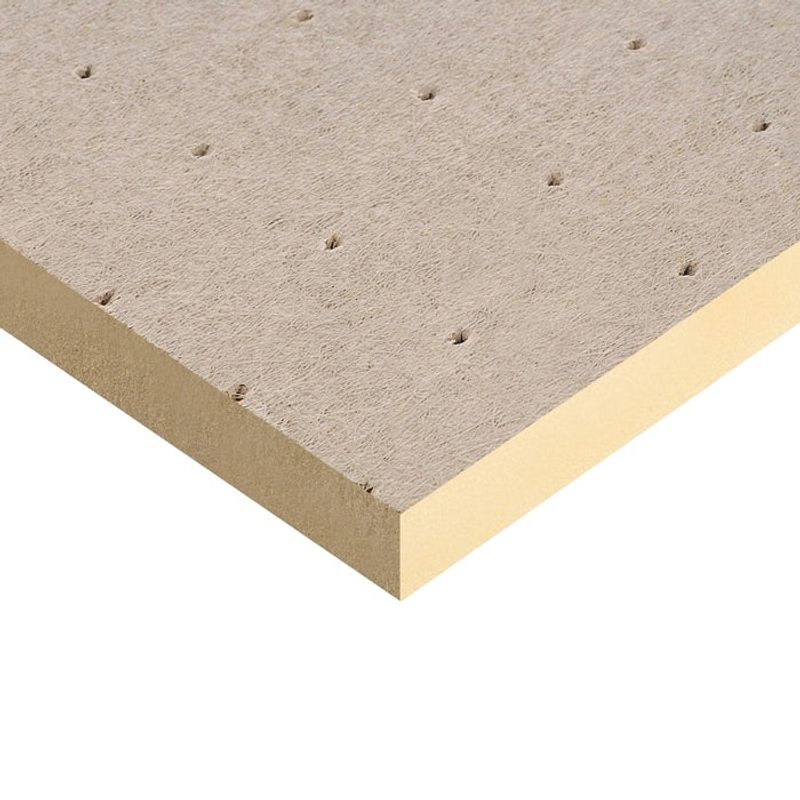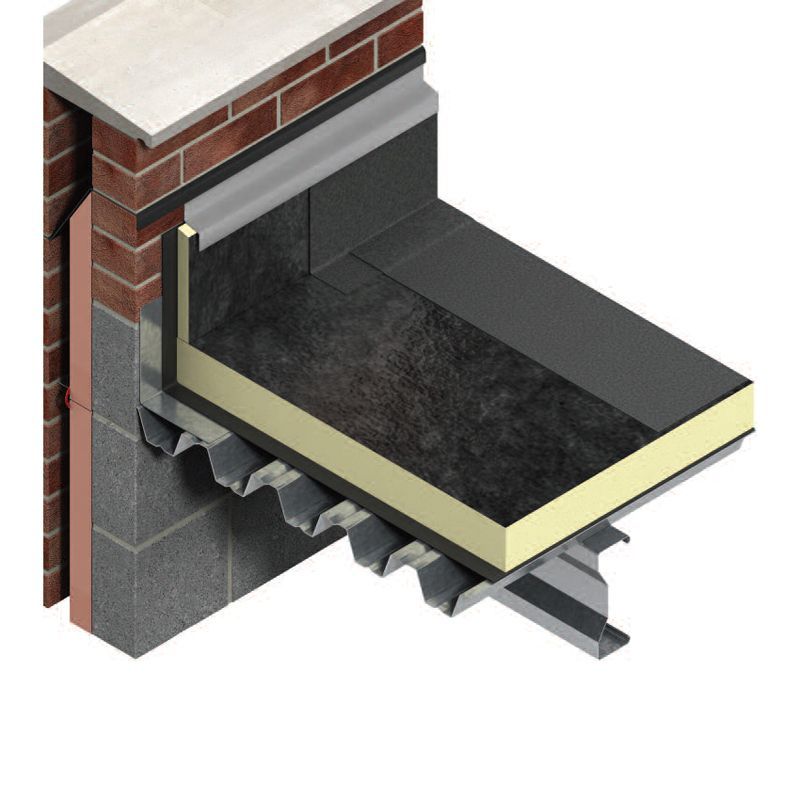Is it worth insulating a flat roof?
Absolutely!
The thing is:
Insulating a flat roof will improve its thermal performance, limit heat loss and make your home more comfortable as well as energy efficient.
So, it should come as no surprise that flat roof insulation is extremely popular with the engaged homeowner in the UK.
And here at Roofing Superstore, we’re going to show you exactly how to insulate a flat roof to make the most of it.
Read on.
Table of contents:
- Cold roof vs warm roof
- How to insulate a flat roof from the outside
- How to insulate a flat roof from the inside
- Why you should insulate your flat roof
Cold roof vs warm roof

You may have come across the terms warm flat roof and cold flat roof, but what’s the difference?
While many people tend to get confused about which is which, it’s really quite simple.
Here’s the scoop:
The key difference between these two types is where the insulation is found.
With a warm roof, the insulation is located on top of the structural timber deck – i.e., outside the roof, which leaves it on the ‘warm’ side. In contrast, a cold roof is where the insulation is placed between the rafters and the deck – i.e., inside of the roof, leaving it on the ‘cold’ side.
That’s all there is to it!

At this point, you’re probably wondering:
Should I choose a warm deck roof construction or a cold roof construction? And what insulation is best for a flat roof?
Check this out:
Warm flat roofs are generally more popular in the UK because they’re easier to install and boast superior thermal performance. On the downside, they tend to add additional height to your home, which could potentially get you in trouble with Building Regulations in your area or possibly your neighbours.
In contrast, cold flat roofs offer better support for foot traffic since you’ll be walking directly on the timber decking rather than on a warm roof insulation board that might get compressed or otherwise damaged. However, their thermal performance leaves something to be desired due to the exposed rafters.
Now that we know the various pros and cons of warm and cold flat roofs, let’s take a closer look at how you need to go about creating each type.
How to insulate a flat roof from the outside
As we mentioned earlier, a warm roof, where you insulate a flat roof from the outside, is the preferred choice in the UK. So, we’re going to start with this type.

-
-
-
-
-
-
-
- Waterproofing
- Insulation
- VCL
- Timber deck
- Timber joists
- Plasterboard ceiling
-
-
-
-
-
-
To construct a warm flat roof, first place either 12mm of plywood or OSB board on the timber joists as a foundation.
Then, to prevent condensation and moisture from affecting the structure, add a vapour control layer (VCL). Using rafter centres and regular spacing, mark where the fixings will go through the VCL.
Apply butyl tape at each penetration point to create a seal. Keep in mind that the warm roof insulation thickness should depend on the height available to accommodate guttering.
Next:
Place a second layer of plywood or OSB board on top of the insulation boards.
Use helical fixings to secure the deck together, piercing through each layer of the build-up, including the flat roof boards.
Lastly, install a waterproof membrane to protect the structure from the elements.
How to insulate a flat roof from the inside
A cold roof consists of the exact same six elements as a warm roof, plus a ventilation layer in accordance with BS 5250: 2021 Management of moisture in buildings – Code of practice.

-
-
-
-
-
-
-
- Waterproofing
- Timber deck
- Timber joists
- Insulation
- VCL
- Plasterboard ceiling
-
-
-
-
-
-
This is important:
If you don’t factor in a 50-60mm ventilation zone between the roof and the insulation, warm, moist air from your home will make its way up and cause moisture build-up and condensation.
What’s worse:
Over the course of a few years, the entire structure will rot to the point where you’ll have to replace your roof altogether. And nobody wants that.
Having said that, here’s the process:
Start by carefully removing the plasterboard ceiling and setting it aside.
Once you’ve accounted for a sufficient ventilation layer, install the cold flat roof insulation boards between the timber joists following the manufacturer’s instructions.
Then, install a VCL directly under the insulation boards. Finally, replace the ceiling.
Congratulations – you have a brand-new cold roof!
Why you should insulate your flat roof

The task of insulating a flat roof should ideally be done as part of the initial building construction.
That being said:
It’s still possible to do it at a later date, so long as your flat roof isn’t already damaged beyond repair – in which case you’ll have no alternative but to fork out for a complete replacement, however reluctantly.
The good news is:
It doesn’t have to come to that!
There are plenty of high-performance rigid insulation boards from leading brands like Kingspan, Celotex and Recticel available on the market that will get the job done admirably.
What’s more:
These excellent solutions will allow you to get the necessary U-values for your home without breaking the bank.
And now that you know how to insulate a flat roof from either the inside or outside, you have no reason to delay this vital project any longer.





















